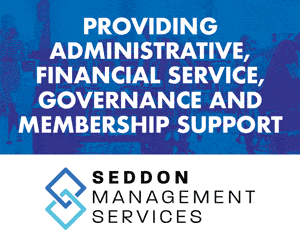Insight from Jessica Atkin, psychology programme manager at SuperWellness.
In today’s dynamic business landscape, the role of an FM extends beyond traditional responsibilities. Embracing inclusivity, which includes diversity and neurodiversity, is crucial for fostering a workplace where every individual feels genuinely valued and supported.
Here are seven key strategies for FMs to consider as they work towards creating inclusive environments that champions diversity and neurodiversity.
- Physical accessibility and environment:
Firstly, ensuring physical spaces are accessible is fundamental to inclusivity. Facilities Managers should focus on providing amenities such as wheelchair ramps, elevators, and all-gender facilities. Also, sensory considerations, like adjustable lighting and noise reduction measures, are important for accommodating neurodiverse individuals. Furthermore, integrating inclusive technology, such as assistive technologies (eg, screen readers, voice recognition software, and tactile navigation devices) along with accessible digital platforms, further enhances the inclusivity of the physical environment.
- Cultural inclusivity:
Workspaces should reflect the diversity of the workforce, therefore celebrating cultural diversity through acknowledging holidays and traditions from various backgrounds is essential. In addition, language access is imperative to break communication barriers, which may involve the translation of important communications and providing interpreters as needed. On a wider scale, engaging with the local community ensures that the organisation is connected to the broader cultural environment, fostering a sense of belonging for all.
- Training and awareness:
Implementing training programs about diversity and inclusion, including specific sessions on neurodiversity and other current topics, is crucial. Facilities Managers should strive to create awareness among staff to break down stereotypes, eliminate prejudice and discrimination, and build a more understanding workplace culture. Furthermore, continuous education on these topics from industry experts and advocates, contributes to a more inclusive and respectful environment.
- Flexible work practices:
Recognising diverse work styles, communication styles, learning styles, and preferences is essential. FMs should aim to design flexible workspaces to accommodate different needs, including quiet zones for focused work as well as collaborative areas for socialising and idea sharing. Further to this, flexible scheduling options, considering individual requirements such as caregiving responsibilities, contribute to a work environment that values people and prioritises work-life balance.
- Inclusive policies and support:
Establishing clear policies for accommodating both for physical and cognitive needs, is a cornerstone of inclusivity. FMs should ensure that mental health support and resources are readily available, creating a stigma-free environment for individuals to feel comfortable in seeking assistance. Additionally, leadership commitment to inclusivity is vital for the successful implementation of policies that promote diversity and neurodiversity, as leaders serve as the foundation for modelling inclusive behaviours throughout the organisation.
- Employee engagement and networking:
Encouraging the formation of Employee Resource Groups (ERGs) focused on diversity and inclusion, provides a platform for employees to connect and share their experiences. An Employee Resource Group (ERG) is a voluntary, employee-led group within a company that is formed based on shared characteristics or experiences, providing a supportive and inclusive community for its members. To further amplify the commitment to diversity and neurodiversity, organisations may want to elect champions within the ERG, ie, people who can lead initiatives, raise awareness, and advocate for the unique needs of diverse groups. Also, organising networking opportunities and inclusive events can be a great way to foster a sense of community within the workplace. Such initiatives are shown to enhance teamwork and collaboration among colleagues from diverse backgrounds.
- Continuous improvement and assessment:
Finally, it is important to regularly assess the workplace environment to identify areas for improvement in diversity and inclusion efforts. Therefore, collecting feedback from employees, especially from those with diverse perspectives, is invaluable. Furthermore, diverse hiring practices, such as implementing blind recruitment processes, actively seeking candidates from underrepresented groups, and promoting diversity in interview panels, can help to cultivate a workforce that reflects a broad spectrum of backgrounds and experiences. These practices not only enhance the richness of perspectives within the organisation but also underscore a commitment to building an inclusive workplace. Paired with career development opportunities and ongoing assessments, these initiatives collectively contribute to a workplace culture that values continuous improvement and dedication to inclusivity.
In conclusion, FMs play a pivotal role in shaping the physical and cultural aspects of a workplace. By adopting these seven strategies, they can create environments that embrace diversity and neurodiversity, fostering a workplace where all employees feel respected, included, and able to contribute to the best of their ability. Inclusivity is not just a checkbox; it’s a progressive journey, and FMs have the potential to create diverse and thriving workplaces.
To find out more about fostering inclusivity and neurodiversity, including its neurodiversity webinar and wellbeing consultancy support, visit the SuperWellness website at https://superwellness.co.uk/

























































